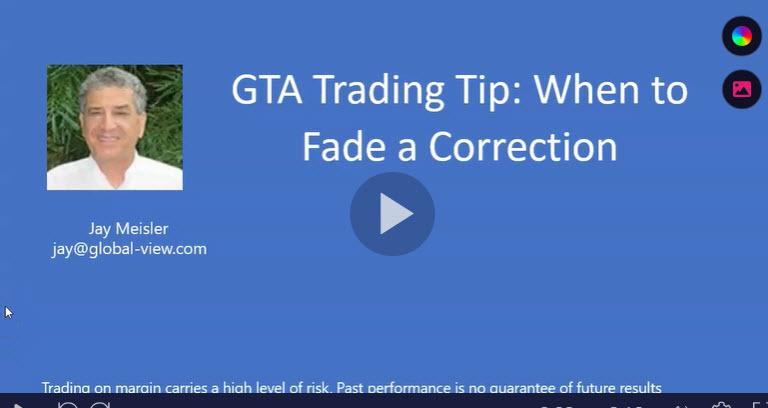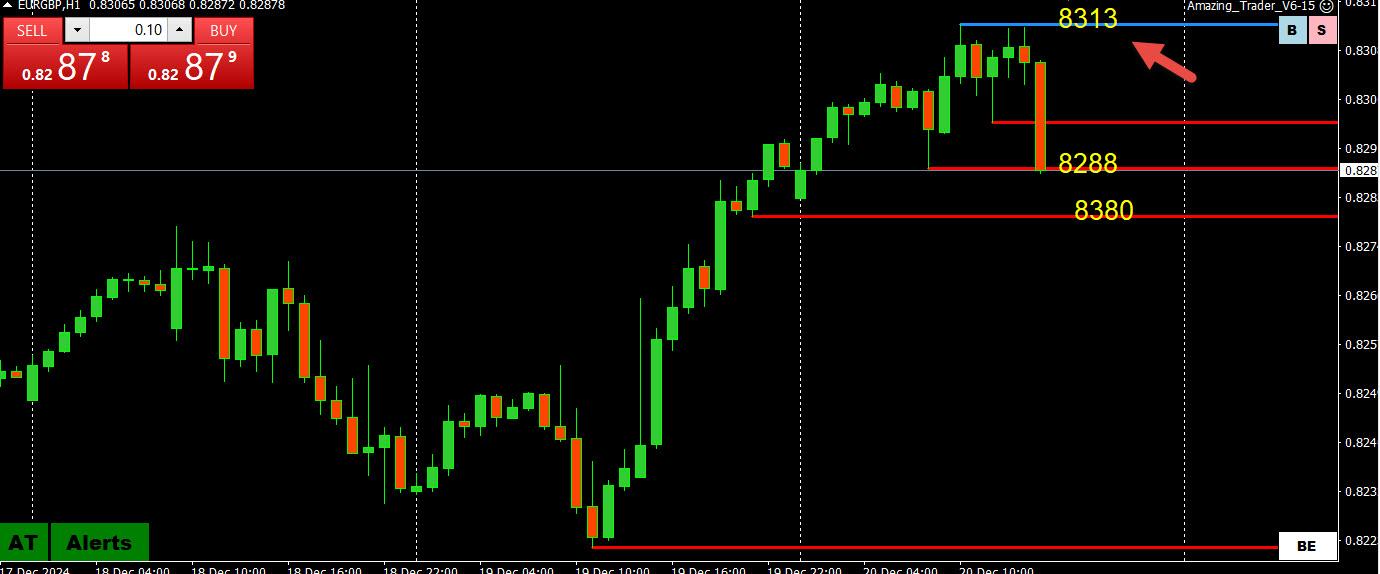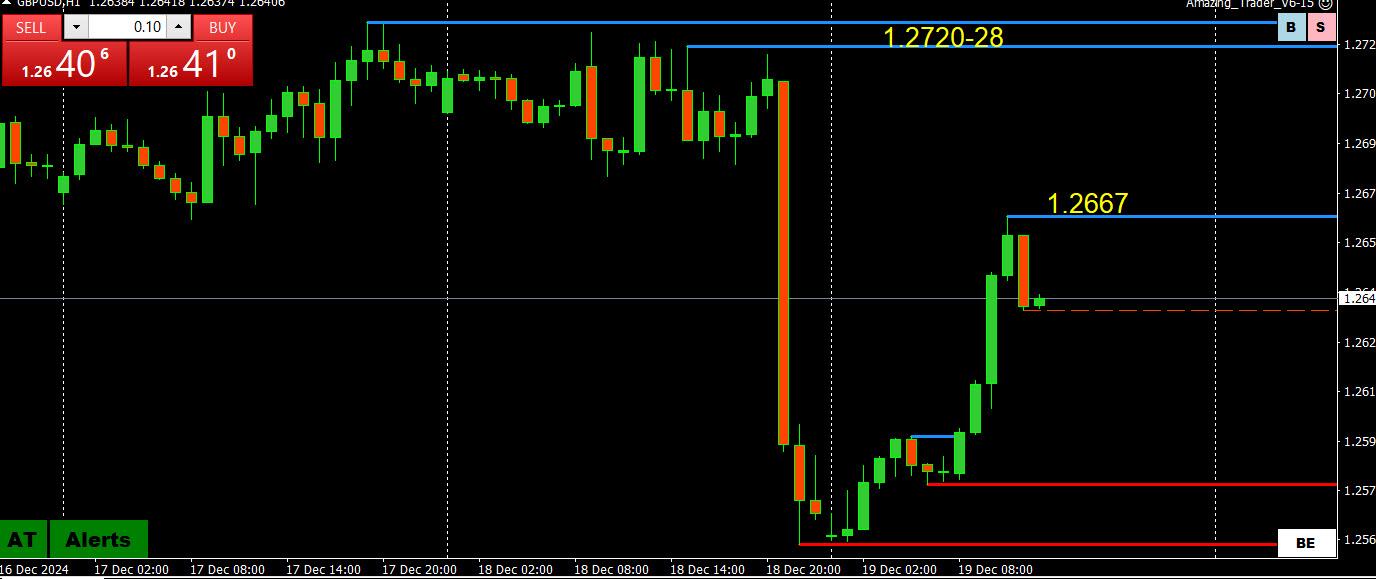-
AuthorSearch Results
-
December 22, 2024 at 11:41 pm #16660
In reply to: Evaluation – Daily Trades
AnonymousDecember 22, 2024 at 1:20 pm #16637In reply to: Trading Tip of The Week
1. Trading Tip: When to Fade a Correction (with video)
The key to any strategy is to be able to put it into practice in real time. We all know that trading rarely operates like a textbook so it is important to understand the logic behind a strategy and why it works so you will know when to employ it. I call this common sense approach and you will see why as I explain when you should fade a correction.
The Strategy
You will be hard-pressed to find this in a trading book or course as this trading tip comes from my many years of experience trading in the forex market.
Simply put it is better to fade a correction or counter-trend move that takes place early in a session (i.e. European or NY session) than one that occurs later in the day, One reason is the market is better able to absorb flows earlier in a session when there is full liquidity and participation. In other words, the trend is not likely to reverse unless key technical levels are taken out. Unless this occurs, buyers are likely to be found below the market in an uptrend and sellers are likely to step in above the market in a downtrend.
Here is the logic: Once a correction runs out of steam and the weak longs or shorts taken with the prevailing trend (i.e. longs in an uptrend or shorts in a downtrend) are squeezed out, the market has less capacity to absorb fresh buying or selling, as the case may be, with the existing trend. This is why you often see the market snap back in the direction of the trend after a correction runs out of steam. It is also why looking to fade an early in the session correction tends to be a high-odds trading strategy. .By fade I mean looking for levels to buy when an uptrend corrects lower or sell when the downtrend corrects higher. .
On the other hand, a retracement that occurs later in the day, especially in the NY session, is more difficult to fade as the market has less capacity to absorb the flows and fresh buyers or sellers are less likely to emerge. In this case, those looking to fade a correction should be prepared to hold the trade into the next trading day.
Summary:
Early in the session correction => Look to fade the move => Expect a snapback.
Late in the day retracements => harder to fade unless you plan to hold the position into the next trading day.
As with any trading pattern, the overall picture needs to be taken into account and whether key technical levels and/or indicators have been violated that would change the risk. As long as this does not occur, corrections that take place early in a session offer trading opportunities for the reasons explained above.
This is a strategy you can put into action as you understand the logic behind why and under what conditions it should work.
Here is a real-time illustration of when to fade a correction and when to avoid it.
December 21, 2024 at 5:10 pm #16616In reply to: Trading Tip of The Week
1. Trading Tip: When to Fade a Correction
The key to any strategy is to be able to put it into practice in real time. We all know that trading rarely operates like a textbook so it is important to understand the logic behind a strategy and why it works so you will know when to employ it. I call this common sense approach and you will see why as I explain when you should fade a correction.
The Strategy
You will be hard-pressed to find this in a trading book or course as this trading tip comes from my many years of experience trading in the forex market.
Simply put it is better to fade a correction or counter-trend move that takes place early in a session (i.e. European or NY session) than one that occurs later in the day, One reason is the market is better able to absorb flows earlier in a session when there is full liquidity and participation. In other words, the trend is not likely to reverse unless key technical levels are taken out. Unless this occurs, buyers are likely to be found below the market in an uptrend and sellers are likely to step in above the market in a downtrend.
Here is the logic: Once a correction runs out of steam and the weak longs or shorts taken with the prevailing trend (i.e. longs in an uptrend or shorts in a downtrend) are squeezed out, the market has less capacity to absorb fresh buying or selling, as the case may be, with the existing trend. This is why you often see the market snap back in the direction of the trend after a correction runs out of steam. It is also why looking to fade an early in the session correction tends to be a high-odds trading strategy. .By fade I mean looking for levels to buy when an uptrend corrects lower or sell when the downtrend corrects higher. .
On the other hand, a retracement that occurs later in the day, especially in the NY session, is more difficult to fade as the market has less capacity to absorb the flows and fresh buyers or sellers are less likely to emerge. In this case, those looking to fade a correction should be prepared to hold the trade into the next trading day.
Summary:
Early in the session correction => Look to fade the move => Expect a snapback.
Late in the day retracements => harder to fade unless you plan to hold the position into the next trading day.
As with any trading pattern, the overall picture needs to be taken into account and whether key technical levels and/or indicators have been violated that would change the risk. As long as this does not occur, corrections that take place early in a session offer trading opportunities for the reasons explained above.
This is a strategy you can put into action as you understand the logic behind why and under what conditions it should work.
Here is a real-time illustration of when to fade a correction and when to avoid it.

.
December 20, 2024 at 9:48 pm #16603In reply to: Forex Forum
AnonymousEURUSD
https://www.ft.com/content/d91d35fc-93ab-4963-8587-7a00fe5c63b4Europe leads the way Mario Draghi might bemoan Europe’s woeful securitisation markets, but SRTs is one area where the old continent has clearly led the way (yes, despite the “Wall Street” headline). In fact, the concept of such deals was enshrined in the EU’s regulatory framework through its implementation of the Basel II banking rule book in 2006, and in 2014 the European Banking Authority laid out detailed guidelines for them. As the EBA said at the time:
December 20, 2024 at 5:26 pm #16599In reply to: Forex Forum
December 20, 2024 at 4:31 pm #16597In reply to: Forex Forum
December 20, 2024 at 3:30 pm #16595In reply to: Forex Forum
December 20, 2024 at 2:45 pm #16586In reply to: Forex Forum
December 20, 2024 at 2:37 pm #16584In reply to: Forex Forum
AnonymousDecember 20, 2024 at 2:16 pm #16573In reply to: Forex Forum
December 20, 2024 at 1:59 pm #16568In reply to: Forex Forum
December 20, 2024 at 1:52 pm #16565In reply to: Forex Forum
December 19, 2024 at 9:19 pm #16544In reply to: Forex Forum
All about positions, first before the hawkish Fed and then the not hawkish BOE
Positions getting squeezed
Long GBP (e.g. short EURGBP)
Long BTCUSD/Cryptos
Long Gold
Long Stocks
Less short EURUSD (meaning less ability to absorb selling)
Apparently long JPYMarkets don’t move this way when they get it right
Those who got blown away will pack it in for the holidays
Those who made out okay will bank their winnings and try not to give it back
Bottom line buy USD dips especially if there is a correction earlier in the day like today
Beware of further liquidations if those with vulnerable positions look to square up, which is typical at this time of year, ahead of a thin Xmas week.
December 19, 2024 at 5:57 pm #16516In reply to: Forex Forum
December 19, 2024 at 5:21 pm #16515In reply to: Forex Forum
For those trading EURUSD (or any currency), I suggest looking at a chart from today and then reading this article
What Does it Mean When a Currency Feels “Bid in an Offered Market?”
December 19, 2024 at 5:04 pm #16514In reply to: Forex Forum
December 19, 2024 at 2:18 pm #16504In reply to: Forex Forum
EURGBP 4 HOUR CHART – DOUBLE BOTTOM
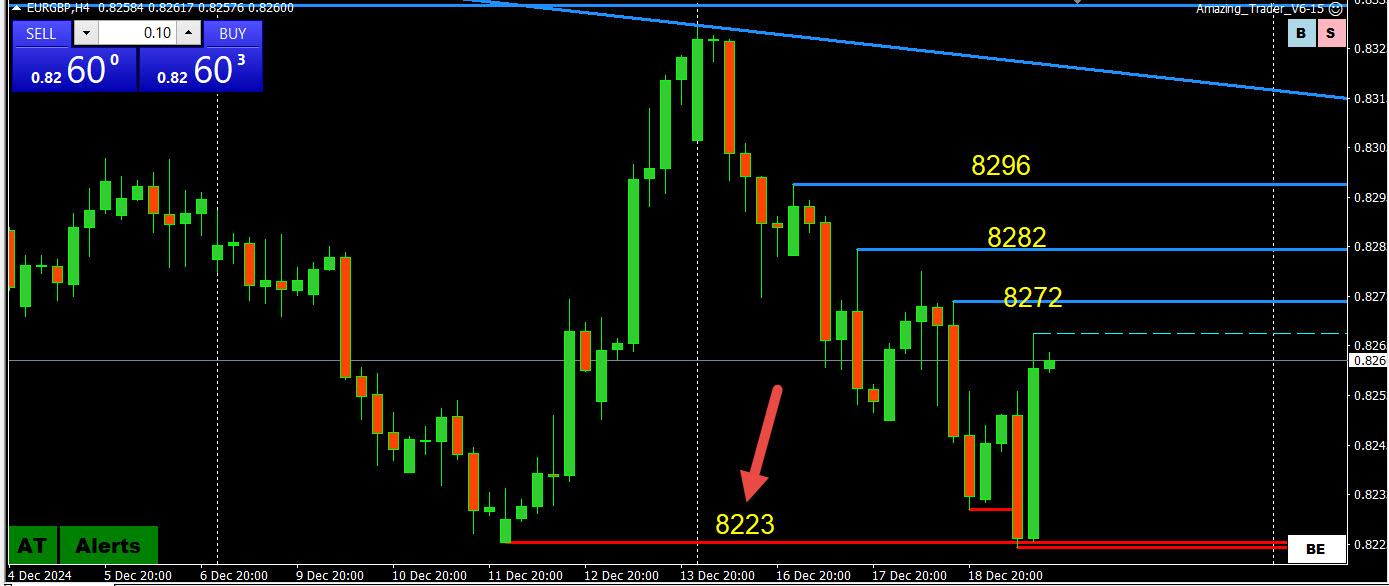
BOE caught the market flatfooted and this is reflected in EURGBP, which bounced off the major .8223 low to form a double bottom
I like to use this cross to give a clue to EURUSD and GBPUSD, the former finding some support out of a EURGBP bounce while GBPUSD struggles trying to regain its bid.
As the chart shows, resistance is between .8270-00.
December 19, 2024 at 1:56 pm #16499In reply to: Forex Forum
EURUSD Daily
Resistances : 1.04350 , 1.04800 & 1.05350
Supports : 1.03400 , 1.03300 & 1.02650
After almost a month of a sideways, we have a renewed Downtrend.
Major issue is that low at 1.03334 – the way how the market picked up EUR from that level.
Next few days we should be seeing attempts to break it – so depending on the outcome we’ll have a pretty clear situation.
For today : EUR is trying to reach 1.04350 and even to extend it towards 1.04800
Close tonight below 1.04350 ( just below it – give/take few pips) will call for another down attempt tomorrow.
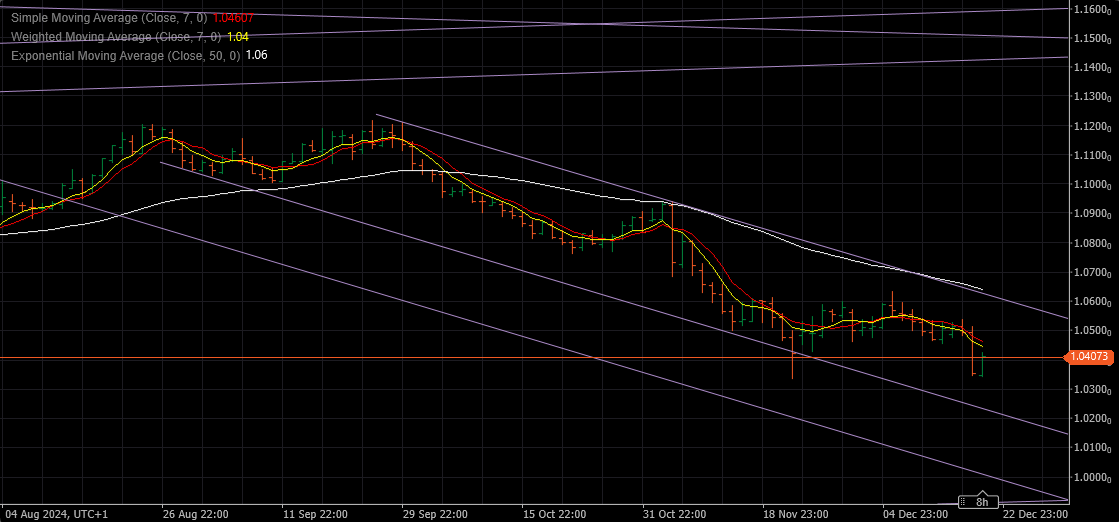 December 19, 2024 at 11:16 am #16487
December 19, 2024 at 11:16 am #16487In reply to: Forex Forum
NEWSQUAWK US OPEN
US equity futures gain, DXY gives back some of post-FOMC strength, JPY hit post-Ueda
Good morning USA traders, hope your day is off to a great start! Here are the top 4 things you need to know for today’s market.
4 Things You Need to Know
European stocks tumble post-FOMC, MU -15% pre-market weighing on chip peers in Europe; US futures attempting to recoup yesterday’s losses.
USD gives back some of yesterday’s post-FOMC gains, JPY hit after BoJ Governor Ueda’s press conference.
US yield curve steepens, JGBs outperform post-Ueda, Gilts lag pre-BoE.
Crude lifts incrementally off Wednesday’s lows, XAU fares better as the USD pauses for breath.
December 19, 2024 at 11:04 am #16485In reply to: Forex Forum
-
AuthorSearch Results
© 2024 Global View

